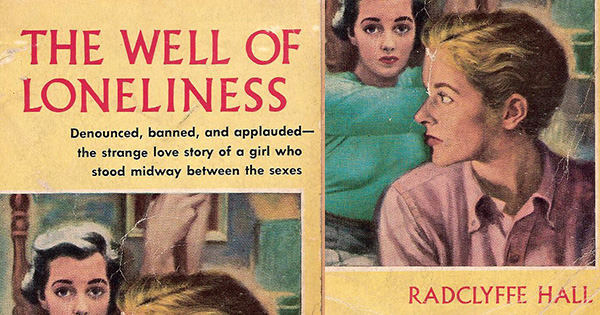By Lee Lynch ©2019
It’s nice that some non-gay writers include us in their stories. I’m thinking of Lawrence Block’s Matt Scudder detective novels in which he has an amusing lesbian friend who is a dog groomer. Very respectful and matter-of-fact that she’s a dyke. But that doesn’t make the novels lesbian any more than the presence of Robert B. Parker’s gay male bartender and strongman in his Spenser series makes the books gay male.
How about Sylvia Plath’s much revered novel The Bell Jar? The writer implies that a secondary character, who typically for that era commits suicide, is gay. Or Mary McCarthy’s The Group, in which one of eight old college friends has a woman lover. Should we consider these lesbian books?
And Mary Oliver, a lesbian, but the reader must hunt for allusions to her affectional orientation, and then be uncertain. Her beloved books are probably included every lesbian library and the poems express the experience of one lesbian. Can they be claimed as our literature? Hardly.
Leonardo Padura Fuentes, novelist, critic and essayist, wrote, “I bury myself in Cuba deeply so that I can express what Cuba is, and have not left Cuba because I am a Cuban writer and I can’t be anything else.â€
Padura Fuentes creates Cuban literature. Substitute the word “lesbian†for “Cuba†and his sentence describes an author of lesbian literature. Genre doesn’t matter, nor era, fiction or non-fiction. Truly lesbian writing delves deep into the lesbian psyche, not to the exclusion of the rest of human experience, but through the unique perspective of gay women.
Jeannette Foster’s renowned and lengthy history and analysis of writings which hint of, refer to, or portray lesbians, is titled Sex Variant Women in Literature. Itself decidedly a prime example of what I call lesbian literature, the book does not pretend to examine that subject, but only to identify dykes in writings since the Bible. That is lesbians in literature, not lesbian literature.
Again, when Barbara Grier published her bibliography, she included hundreds of works that may only have brushed against the rare gay female individual. The title she chose was The Lesbian In Literature, not lesbian literature.
Neither author claimed to address actual lesbian literature. There was little of it to examine in any case.
And now the label is being slapped on all sorts of books, and categorized that way by LGBTQ people themselves. This trend is not encouraging queer women to tenaciously explore and document our lesbian experiences. It only encourages the assimilation that manifests in crossover books, books written to appeal to all readers. It only discourages most publishers from accepting submissions whose focus is fully and earnestly lesbian. It only denies lesbian readers works that reflect the reality of our lives.

While it’s true that we can only write that which inspires us, when teachers, editors, agents and awards administrators, among others, hold mainstream writing as the standard, and all but ignore books with an exclusively lesbian focus, they lead us away from serious, in depth examination of our lesbian selves. No matter how popular or literary, including a gay female character or a dalliance between women or a minor character who is questioning—none of those are legitimately part of lesbian literature.
This may smack of separatism and early gay liberation, but we have a right to our own cultures, whatever kind of queer we are. As we focus our words on ourselves, we build a legacy for the future-dykes of two or two hundred years, whether next door to us or in a place where queericide is the norm.
When I see today’s writers of unabashed lesbian stories who show the same spirit as Jane Rule, Isabel Miller, and Radclyffe Hall not getting their due, I wonder how far have we really come? These are the women who are struggling to communicate the essence of who we are by writing from their very lesbian hearts.


